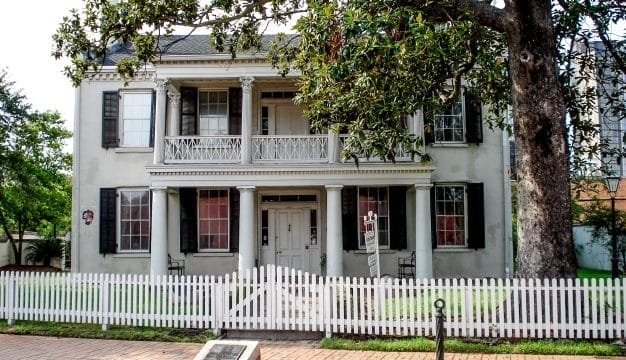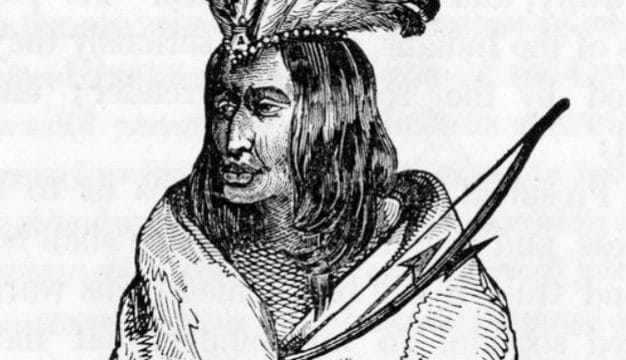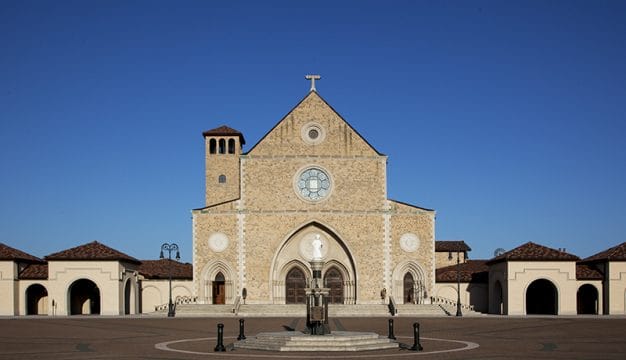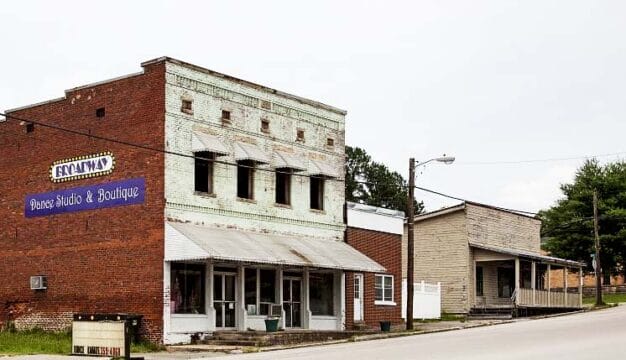Bernardo de Gálvez
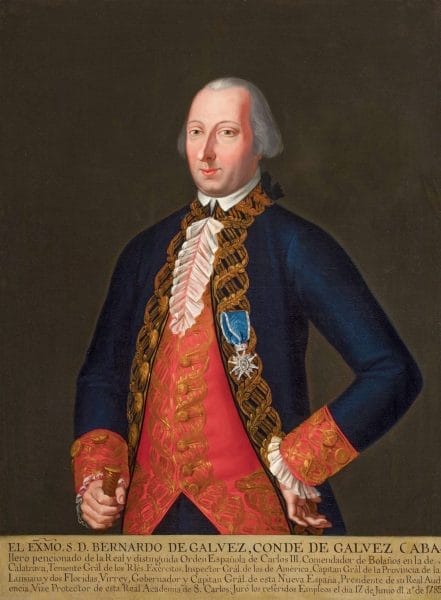 Bernardo de Gálvez
Bernardo de Gálvez y Madrid, Viscount of Galveston and Count of Gálvez (1746-1786) was a Spanish military leader, governor of Louisiana and Cuba, and Viceroy of New Spain. He played an important role along the Gulf Coast during the American Revolution, providing war supplies to the Americans and capturing Fort Charlotte (Fort Condé) in present-day Mobile, Mobile County. His forces later seized British West Florida, which included much of south Alabama.
Bernardo de Gálvez
Bernardo de Gálvez y Madrid, Viscount of Galveston and Count of Gálvez (1746-1786) was a Spanish military leader, governor of Louisiana and Cuba, and Viceroy of New Spain. He played an important role along the Gulf Coast during the American Revolution, providing war supplies to the Americans and capturing Fort Charlotte (Fort Condé) in present-day Mobile, Mobile County. His forces later seized British West Florida, which included much of south Alabama.
Gálvez was born in Macharaviaya on the southern coast of Spain on July 23, 1746. As a teenager, he studied military science at the military academy of Avila. He served as a lieutenant during Spain’s failed 1762 invasion of Portugal in the Seven Years’ War, known as the French and Indian War in the United States. Gálvez then served as a captain in the militia of La Coruña in Galicia. In 1768, he travelled with his uncle, Jose de Gálvez, inspector of the Viceroyalty of New Spain, to Mexico, a province of New Spain. He was put in charge of troops tasked with ending Apache Indian attacks on Spanish interests in west-central Mexico and was wounded twice while fighting Apache Indians in 1770 and 1771. Gálvez returned to Spain in 1772 and spent the next three years in France, studying military science with the Regiment of Cantabria. In 1775, the Spanish government transferred him to Seville. That June, he was again seriously wounded in Spain’s disastrous attempt to take the Ottoman city of Algiers. Despite the failed effort, Gálvez was promoted to lieutenant colonel and appointed as a professor at the military academy of Ávila.
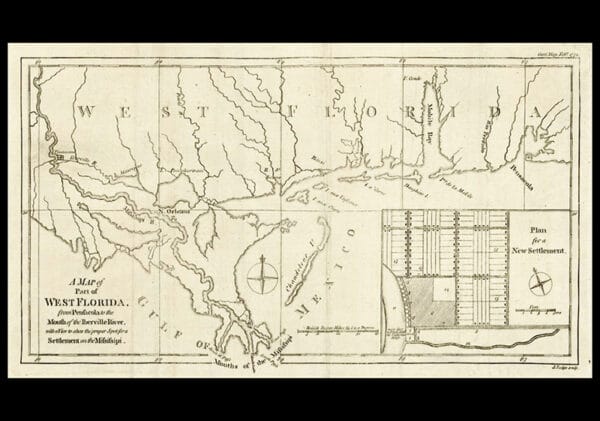 West Florida, 1772
In 1776, Gálvez was commissioned as a colonel and placed in charge of a regiment of Spanish troops sent to the Spanish colony of Louisiana, which Spain had received from France in a secret treaty in 1762. That September, King Charles III named Gálvez governor of the Spanish colony of Louisiana, and he took office on January 1, 1777. Soon after, he married Marie Felice de Saint-Maxent d’Estrehan, widow of a Spanish colonial official; the couple would have three children. As governor of Louisiana, Gálvez attempted to end British smuggling of various goods and commodities, promote trade with France, and establish trade with Cuba and Yucatán. In the early years of the American Revolution before Spain officially declared war on Britain, he secretly supplied the American rebels with gunpowder, muskets, and other supplies, shipped from New Orleans up the Mississippi River to the Ohio River and into Pittsburgh and Philadelphia.
West Florida, 1772
In 1776, Gálvez was commissioned as a colonel and placed in charge of a regiment of Spanish troops sent to the Spanish colony of Louisiana, which Spain had received from France in a secret treaty in 1762. That September, King Charles III named Gálvez governor of the Spanish colony of Louisiana, and he took office on January 1, 1777. Soon after, he married Marie Felice de Saint-Maxent d’Estrehan, widow of a Spanish colonial official; the couple would have three children. As governor of Louisiana, Gálvez attempted to end British smuggling of various goods and commodities, promote trade with France, and establish trade with Cuba and Yucatán. In the early years of the American Revolution before Spain officially declared war on Britain, he secretly supplied the American rebels with gunpowder, muskets, and other supplies, shipped from New Orleans up the Mississippi River to the Ohio River and into Pittsburgh and Philadelphia.
Soon after Spain declared war on Great Britain on June 21, 1779, Gálvez intercepted a secret letter from British King George III and his prime minister Frederick North, 2nd Earl of Guilford, to Gen. John Campbell, the British commander at Pensacola, Florida. Through the letter, the British government ordered Campbell to seize New Orleans. In response, Gálvez gathered a large force which, in a masterful military campaign between June and September 1779, captured all four British forts, including Baton Rouge and Natchez, 550 enemy soldiers, and two naval vessels in the lower Mississippi River.
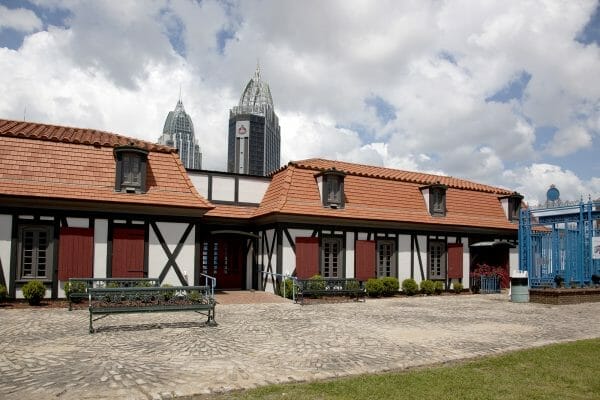 Fort Condé
Gálvez then turned his attention to the British garrison stationed at Fort Charlotte (originally built by the French as Fort Condé in 1723), protecting Mobile. After a two-week siege by Spanish troops, under the command of José Manuel de Ezpeleta, from March 2-14, 1780, British commander Elias Durnford surrendered his outnumbered forces to Gálvez. A year later, he captured Pensacola after a siege that last from March 9 to May 8, 1781. His military successes left the British without a port on the Gulf Coast. In the next year, forces under Gálvez’s command captured the British naval base at New Providence in the Bahamas. His campaign distracted British forces that might have otherwise helped Lt. Gen. Charles Cornwallis and his British troops entrenched against American forces at Yorktown, Virginia, from September 28 to October 19, 1781. In recognition of his military victories, the Spanish crown promoted him to lieutenant general, then field marshal, and appointed him as governor and then captain-general of Louisiana and Florida. He also received command of the Spanish expeditionary army in America and the titles of viscount of Gálveztown and count of Gálvez. For his contributions to American independence, Gálvez was named as a delegate to the 1783 Paris peace conference, which, among other things, returned East and West Florida to Spain. The U.S. Congress also formally recognized Gálvez for his services to secure American independence.
Fort Condé
Gálvez then turned his attention to the British garrison stationed at Fort Charlotte (originally built by the French as Fort Condé in 1723), protecting Mobile. After a two-week siege by Spanish troops, under the command of José Manuel de Ezpeleta, from March 2-14, 1780, British commander Elias Durnford surrendered his outnumbered forces to Gálvez. A year later, he captured Pensacola after a siege that last from March 9 to May 8, 1781. His military successes left the British without a port on the Gulf Coast. In the next year, forces under Gálvez’s command captured the British naval base at New Providence in the Bahamas. His campaign distracted British forces that might have otherwise helped Lt. Gen. Charles Cornwallis and his British troops entrenched against American forces at Yorktown, Virginia, from September 28 to October 19, 1781. In recognition of his military victories, the Spanish crown promoted him to lieutenant general, then field marshal, and appointed him as governor and then captain-general of Louisiana and Florida. He also received command of the Spanish expeditionary army in America and the titles of viscount of Gálveztown and count of Gálvez. For his contributions to American independence, Gálvez was named as a delegate to the 1783 Paris peace conference, which, among other things, returned East and West Florida to Spain. The U.S. Congress also formally recognized Gálvez for his services to secure American independence.
In September 1783, Gálvez returned to Spain but sailed to the West Indies to be governor and captain-general of Cuba in October 1784. Following the death of his father, Matías de Gálvez y Gallardo, then the viceroy of New Spain, in November 1784, Gálvez was named to fill his father’s former positon. As viceroy, Gálvez instituted numerous reforms, donated funds to help the less fortunate, and made many civic improvements. His efforts apparently made him very popular with the people of Mexico City. The Audencia, the highest tribunal of the Spanish crown in New Spain, feared Gálvez’s growing popularity, however, and reported to the Spanish king that he was going to declare the independence of New Spain. The Crown severely rebuked Gálvez. He became ill in late 1786 and turned over all his governmental duties except the captain generalship to the Audencia. On November 30, 1786, he died at age 40 in Tacubaya, now part of Mexico City, and was interred in the cemetery of San Fernando in Mexico City.
Since his death, Gálvez has been memorialized through statues and the naming of streets, buildings, and several towns after him in Texas, Louisiana, and Alabama. Mobile erected a statue of Gálvez in its Spanish Plaza in the 1960s, and others were erected in New Orleans and Washington, D.C. On December 16, 2014, the U.S, Congress made Gálvez an honorary American citizen for his assistance to the Americans during the War of Independence.
Further Reading
- Caughey, John Walton. Bernardo de Gálvez in Louisiana 1776-1783. Gretna, La.: Pelican Publishing Company, 1998.
- Boeta, José Rudolfo. Bernardo de Gálvez. Madrid, Spain: Publicaciones Espanolas, 1976.
- Chávez, Thomas E. Spain and the Independence of the United States: An Intrinsic Gift. Albuquerque, N.M.: University of New Mexico Press, 2002.
